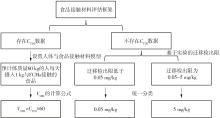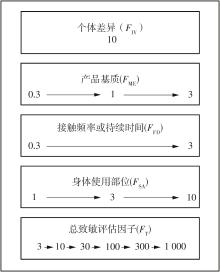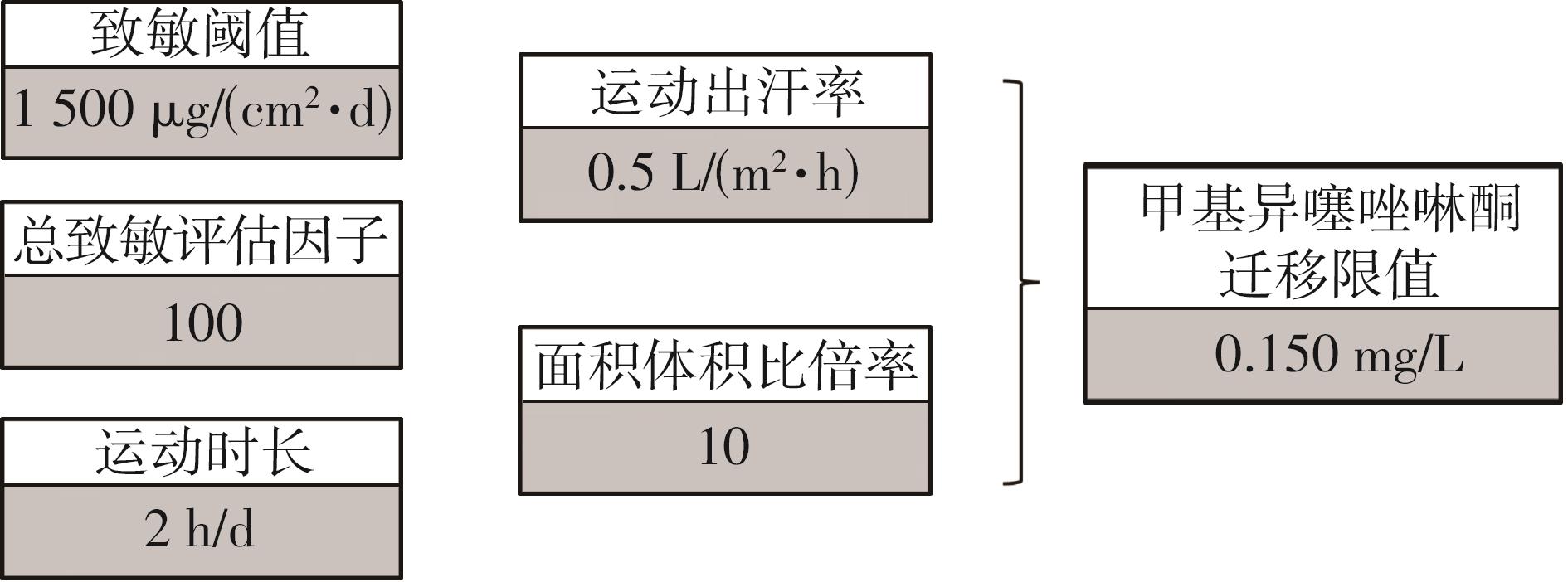| 1 |
张静,陈会明 .邻苯二甲酸酯类增塑剂的危害及监管现状[J].现代化工,2011,31(12):1-6.
|
|
ZHANG Jing, CHEN Hui-ming .Hazards and supervision status of phthalate plasticizer[J].Modern Chemical Industry,2011,31(12):1-6.
|
| 2 |
徐振东,顾娟红,黄丽娟,等 .加速溶剂萃取-快速液相色谱法测定纺织品中烷基苯酚和烷基苯酚聚氧乙烯醚[J].分析试验室,2012,31(8):112-115.
|
|
XU Zhen-dong, GU Juan-hong, HUANG Li-juan,et al .Determination of alkylphenols and alkylpheol polyethoxylates in textile by accelerated solvent extraction and rapid liquid chromatography[J].Chinese Journal of Analysis Laboratory,2012,31(8):112-115.
|
| 3 |
黄湘鹭,卢家灿,邢书霞,等 .欧盟RAPEX系统通报情况分析及对我国化妆品原料管理的启示[J].日用化学工业,2022,52(6):638-644.
|
|
HUANG Xianglu, LU Jiacan, XING Shuxia,et al .Information bulletin analysis of EU RAPEX system and enlightenment to cosmetic ingredient management in China[J].China Surfactant Detergent & Cosmetics,2022,52(6):638-644.
|
| 4 |
赵付文,孙卓军,高国庆,等 .食品接触塑料材料中有害重金属迁移量测定方法综述[J].化学分析计量,2015,24(1):101-105.
|
|
ZHAO Fuwen, SUN Zhuojun, GAO Guoqing,et al .Review of determination methods of harmful heavy metal migration amount in plastic materials contacting with food [J].Chemical Analysis and Meterage,2015,24(1):101-105.
|
| 5 |
USEPA .Guidelines for human exposure assessment[R].Washington DC:Risk Assessment Forum,2019.
|
| 6 |
ECHA .Guidance on information requirements and chemical safety assessment,Chapter R.15:consumer exposure assessment[R].Helsinki:ECHA,2016.
|
| 7 |
国家药品监督管理局 .全国婴童用品标准化工作组正式成立[EB/OL].(2020-06-03)[2023-01-20]..
|
| 8 |
HERMAN A, AERTS O, DE MONTJOYE L,et al .Isothiazolinone derivatives and allergic contact dermatitis:a review and update[J].Journal of the European Academy of Dermatology and Venereology,2019,33(2):267-276.
|
| 9 |
Commission European .Directive 2009/48/EC of the European parliament and of the council of 18 June 2009 on the safety of toys[Z].Brussels:European Commission,2009.
|
| 10 |
Safety of toys-Part 9:Organic chemical compounds-requirements:EN 71-9:2005+A1:2007 [S].
|
| 11 |
NRC Committee on Pesticides in the Diets of Infants and Children .Pesticides in the diets of infants and children [R].Washington DC:National Academies Press (US),1993.
|
| 12 |
IPCS .Principles for the evaluating health in children associated with exposure to chemicals[R].Geneva:United Nations Environment Programme,International Labour Organization,World Health Organization,2006.
|
| 13 |
ARMSTRONG T W, HUSHKA LJ, Tell J G,et al .A tiered approach for assessing children’s exposure[J].Environmental Health Perspectives,2000,108(6):469-474.
|
| 14 |
USEPA .Child-specific exposure factors handbook (2008,Final Report)[R].Washington DC:USEPA,2008.
|
| 15 |
ESKENAZI B, BRADMAN A, CASTRIONA R .Exposure of children to organophosphate pesticides and their potential adverse health effects [J].Environmental Health Perspectives,1999,107(3):409-419.
|
| 16 |
LEWIS R G, FORTUNE C, WILLIS R D,et al .Distribution of pesticides and polycyclic aromatic hydrocarbons in house dust as a function of particle size[J].Environmental Health Perspectives,1999,107(9):721-726.
|
| 17 |
van E JGM, PRUD’HOMME de L LCH .Non-food products:How to assess children’s exposure?[R].Netherlands:RIVM,2007.
|
| 18 |
RENWICK A G, DORNE J L, WALTON K .An analysis of the need for an additional uncertainty factor for infants and children[J].Regulatory Toxicology and Pharmacology,2000,31(3):286-296.
|
| 19 |
USEPA .A review of the reference dose and reference concentration processes[R].Washington DC:Risk Assessment Forum,2002.
|
| 20 |
ATSDR .Toxicological profile[EB/OL].(2022-12-07)[2023-01-20]..
|
| 21 |
WHO . Guidelines for drinking-water quality:fourth edition incorporating the first and second addenda[R].Geneva:World Health Organization,2022.
|
| 22 |
IPCS .Principles for the assessment of risks to human health from exposure to chemicals[R].Geneva:World Health Organization,International Programme on Chemical Safety,1999.
|
| 23 |
SONICH-MULLIN C, FIELDER R, WILTSE J,et al .IPCS conceptual framework for evaluating a mode of action for chemical carcinogenesis[J].Regulatory Toxicology and Pharmacology,2001,34:146-152.
|
| 24 |
USEPA .Supplemental guidance for assessing susceptibility from early-life exposure to carcinogens[R].Washington DC:USEPA,2005.
|
| 25 |
生态纺织品技术要求: [S].
|
| 26 |
Safety of toys-Part 3:Migration of certain elements: [S].
|
| 27 |
API A M, BASKETTER D A, CADBY P A,et al .Dermal sensitization quantitative risk assessment (QRA) for fragrance ingredients[J].Regulatory Toxicology and Pharmacology,2008,52:3-23.
|
| 28 |
SCCS .Opinion on skin sensitisation quantitative risk assessment for fragrance ingredients (QRA2) submission Ⅰ[R].Brussels:European Commission,2018.
|
| 29 |
EFSA .Food contact materials[R].Brussels:European Commission,2015.
|
| 30 |
Commission European .Regulation (EC) No1935/2004 of the European parliament and of the council of 27 October 2004 on materials and articles intended to come into contact with food and repealing Directives 80/590/EEC and 89/109/EEC[Z].Brussels:European Commission,2004.
|
| 31 |
EFSA .Note for guidance for food contact materials[R].Brussels:European Commission,2008.
|
| 32 |
van E JGM, VANDERZEEPARK M, PJCM J,et al .Chemicals in toys:a general methodology for assessment of chemical safety of toys with a focus on elements[R].Netherlands:RIVM,2008.
|
| 33 |
Safety of toys-Part 3:Migration of certain elements:EN71-3:2013 [S].
|
| 34 |
KIMBER I, DEARMAN R J, BASKETTER D A,et al .Dose metrics in the acquisition of skin sensitization:thresholds and importance of dose per unit area[J].Regulatory Toxicology and Pharmacology,2008,52:39-45.
|
| 35 |
UPADHYE M R, MAIBACH H I .Influence of area of application of allergens on sensitization in contact dermatitis[J].Contact Dermatitis,1992,27(5):281-286.
|
| 36 |
SCCS .Opinion on methylisothiazolinone (MI) (P94) submission Ⅲ (sensitisation only)[R].Brussels:European Commission,2015.
|
| 37 |
CASSIMOS C, KANAKOUDI-TSAKALIDIS F, SPYROGLOU K,et al .Skin sensitisation to 2,4 dinitrochlorobenzene (DNCB) in the first months of life [J].Journal of Clinical and Laboratory Immunology,1980,3:111-113.
|
| 38 |
GERBERICK G F, ROBINSON M K, FELTER S P,et al .Understanding fragrance allergy using an exposure-based risk assessment approach[J].Contact Dermatitis,2001,45(6):333-340.
|
| 39 |
FELTER S P, ROBINSON M K, BASKETTER D A,et al .A review of the scientific basis for uncertainty factors for use in quantitative risk assessment for the induction of allergic contact dermatitis[J].Contact Dermatitis,2002,47(5):257-266.
|
| 40 |
关宏岩,赵星,屈莎,等 .学龄前儿童(3~6岁)运动指南[J].中国儿童保健杂志,2020,28(6):714-720.
|
|
GUAN Hong-yan, ZHAO Xing, QU Sha,et al .Physical activity guideline for Chinese preschoolers aged 3-6 years[J].Chinese Journal of Child Health Care,2020,28(6):714-720.
|
| 41 |
张云婷,马生霞,陈畅,等 .中国儿童青少年身体活动指南[J].中国循证儿科杂志,2017,12(6):401-409.
|
|
ZHANG Yunting, MA Shengxia, CHEN Chang,et al .Physical activity guide for Chinese children and adolescents[J].Chinese Journal of Evidence-Based Pediatrics,2017,12(6):401-409.
|
| 42 |
张林凤 .关于运动强度分级的探讨[J].浙江体育科学,1998,20(5):23-26.
|
|
ZHANG Lin-feng .Discussion on grading the exercising intensity[J].Zhejiang Sport Science,1998,20(5):23-26.
|
| 43 |
ARLEGUI L, SMALLCOMBE J W, FOURNET D,et al .Body mapping of sweating patterns of pre-pubertal children during intermittent exercise in a warm environment[J].European Journal of Applied Physiology,2021,121(12):3561-3576.
|
 ), ZHU Zhenhai1, LI Qiong1, HUANG Lina2, HUO Weiqiang3, FANG Han3, LIU Zuoqi3
), ZHU Zhenhai1, LI Qiong1, HUANG Lina2, HUO Weiqiang3, FANG Han3, LIU Zuoqi3





